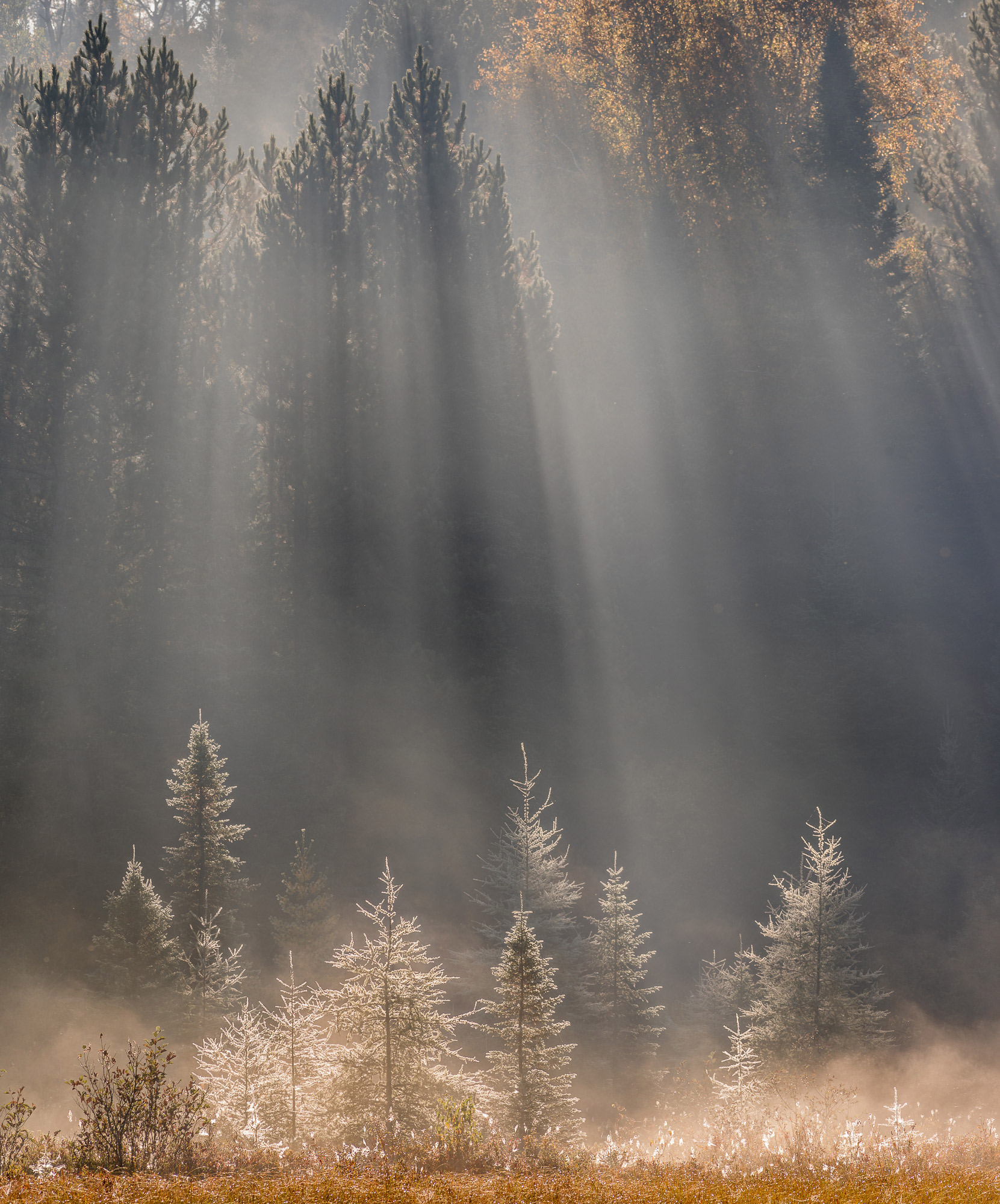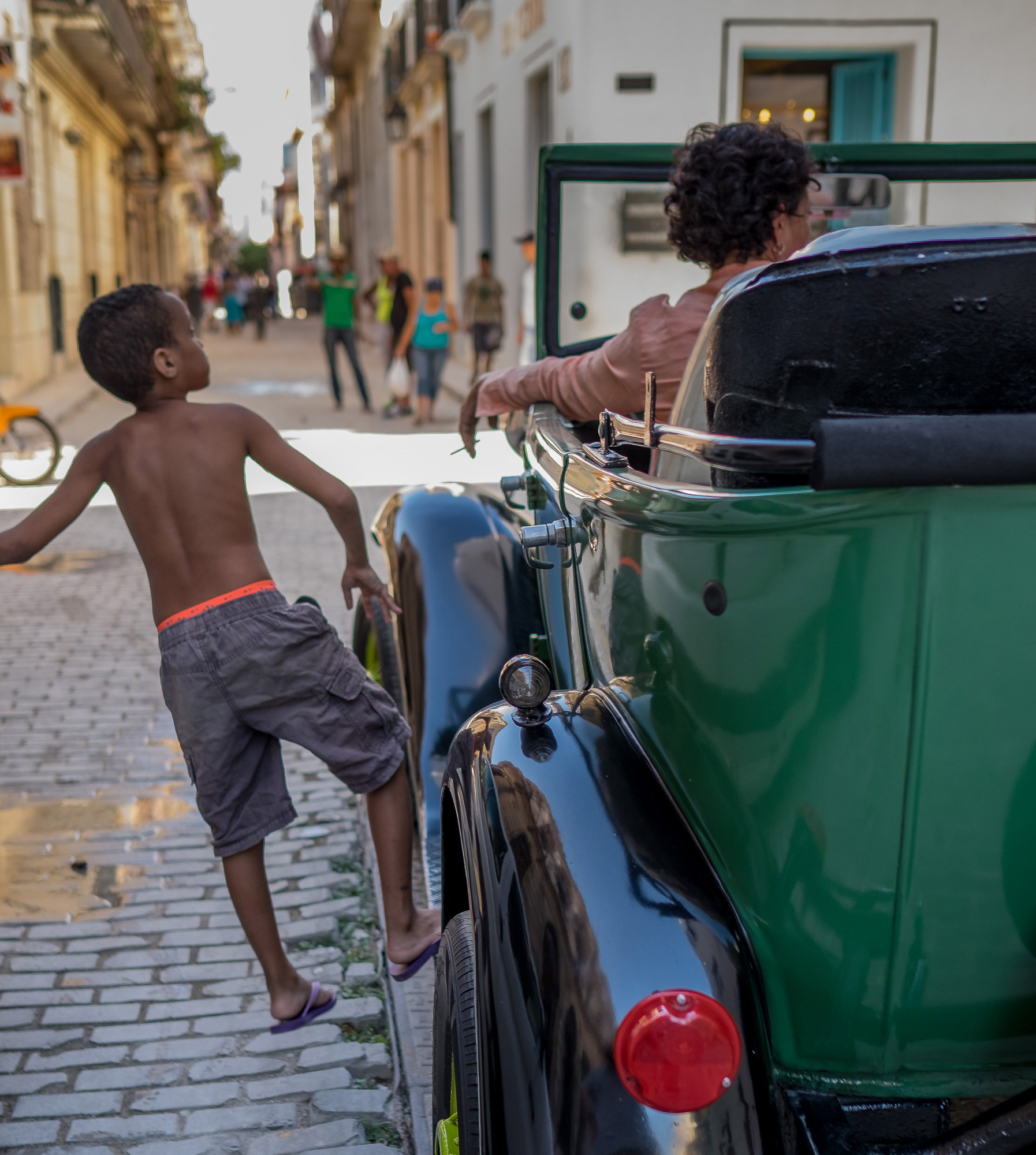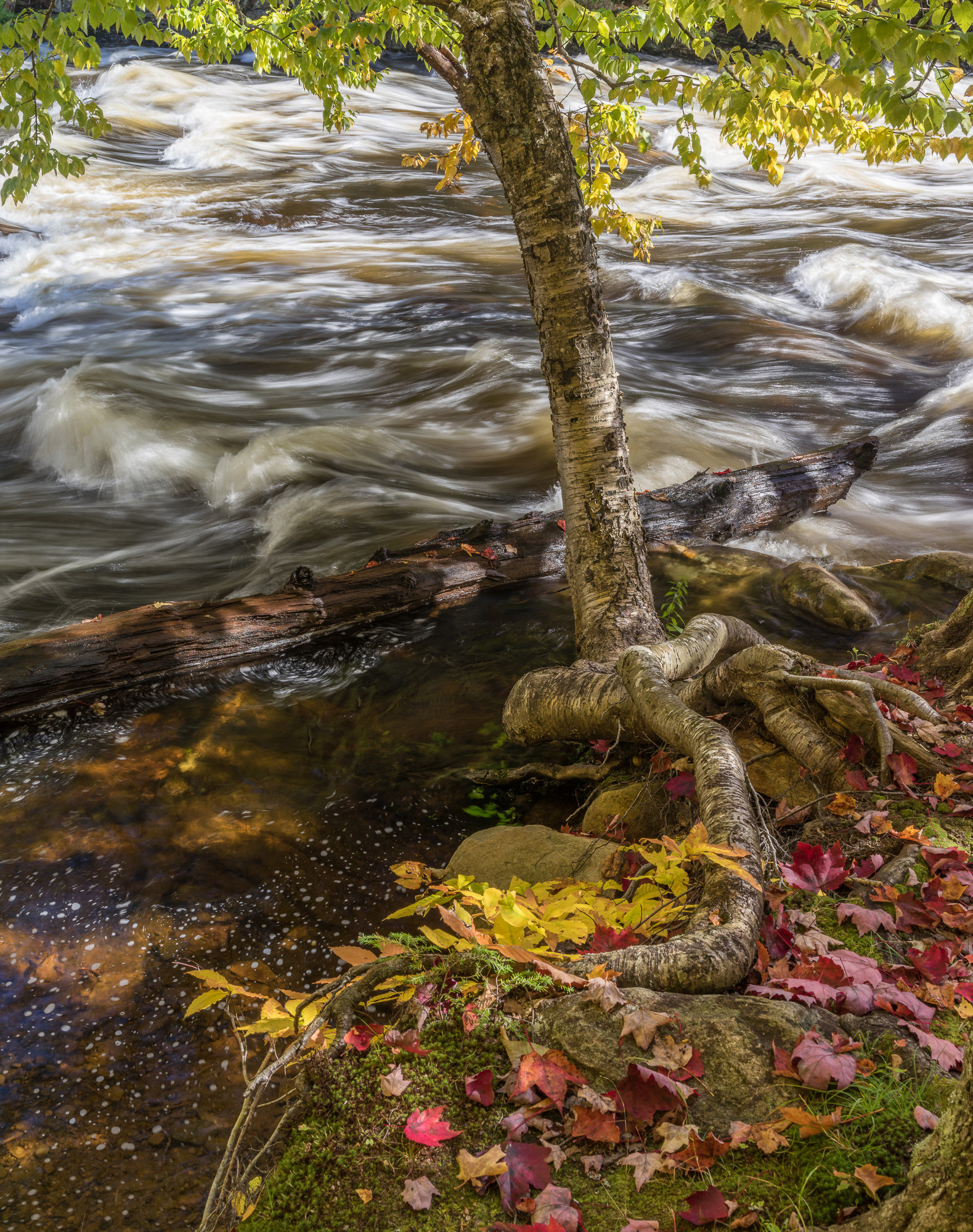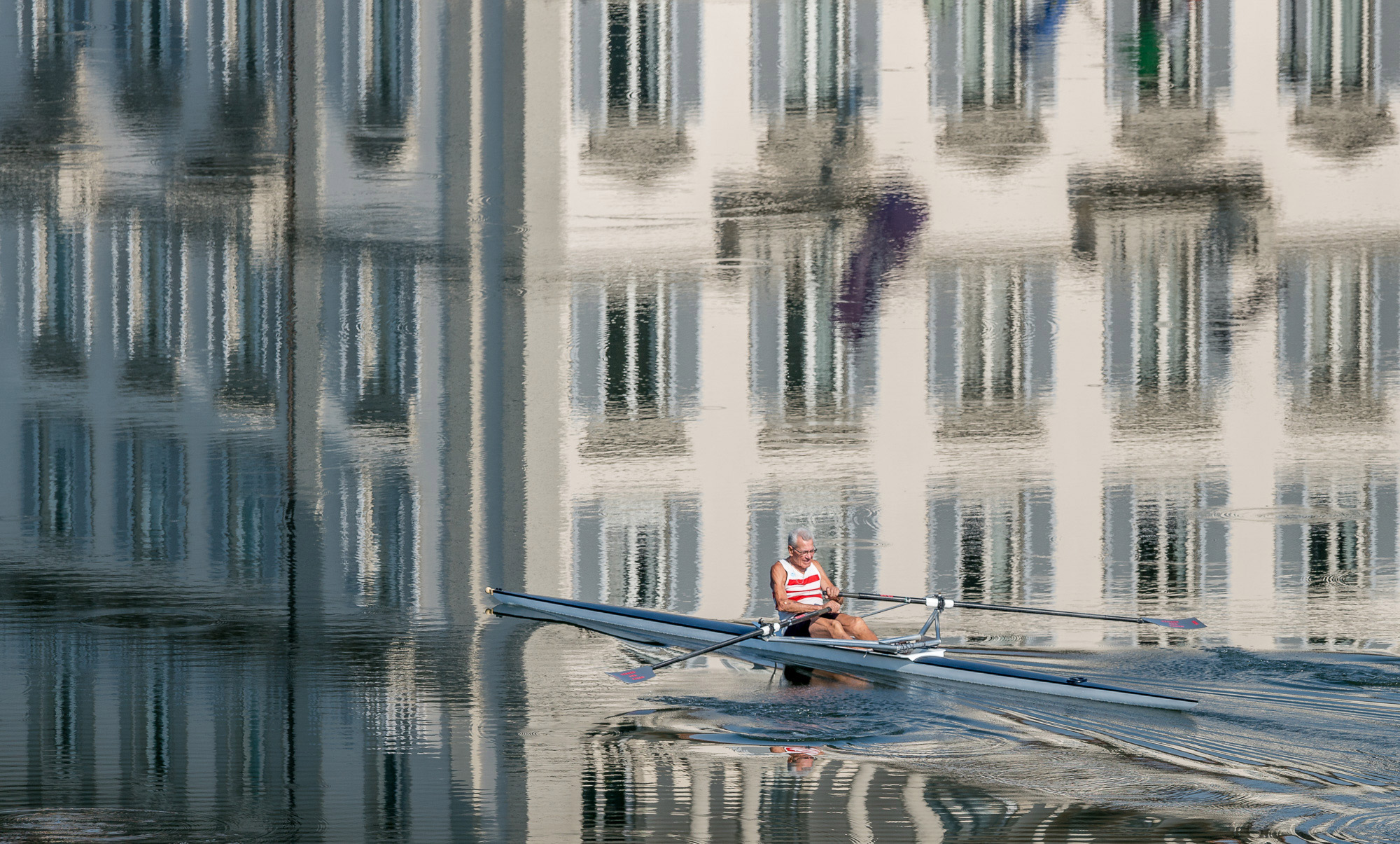When I finally get to work, the process is a dance: the beats of the strobe-light act like a metronome; the constant back and forth movement in front and behind the camera to check, the need to stay in motion in order to be as invisible as possible in the picture. The entire process is very physical and I think that shows in the work.
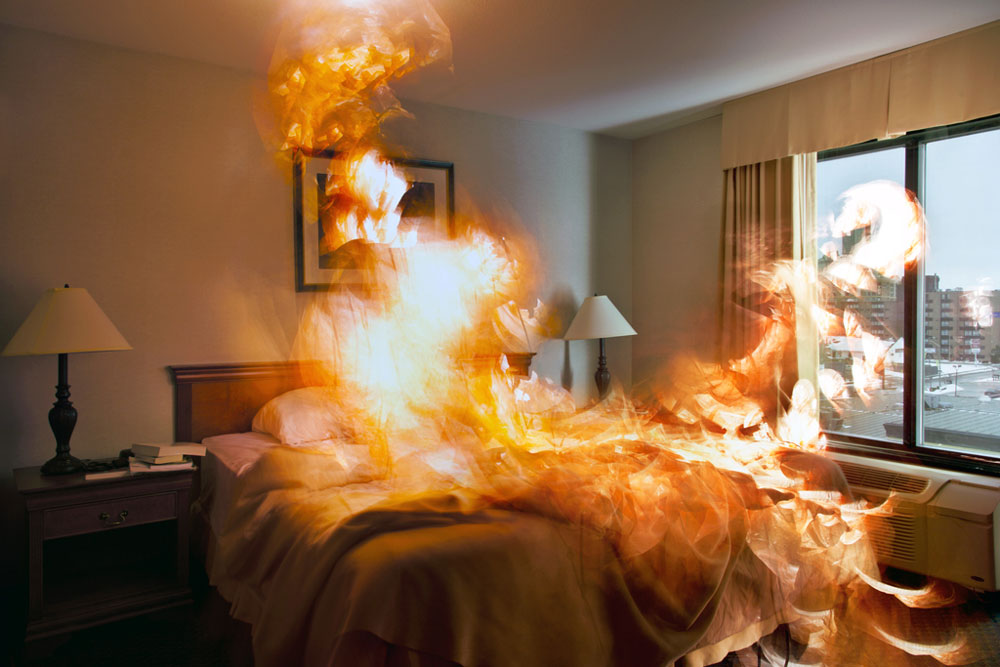

Samuel Choisy is a French photographer and artist living in Toronto Canada. His work is labor intensive and requires an entirely unique and fully immersive process for it’s creation. Samuel often rents a hotel room, sequestering himself away to generate photographic art pieces using “light painting.” The process has Samuel spending days in isolation and entering a trance-state to birth moments and spaces of magic which result in his unique work.
Somewhere between a poetic gesture and an exhaustive craft, Sam’s work is a very intimate exploration excavated and shared for others. The work seems to open a channel to something familiar and yet totally phantasmagorical.
Sam also teaches photography in a singular way which utilizes his very physical, playful and synesthesia utilizing method for making images. I asked Sam about his process, his intention and how these come together to generate this compelling photographic art.
JR: How did you arrive at your current method of photography? Did you always approach your work as an occasion for a contemplative activity or experimentation? How has your work evolved or changed to get you here?
SC: This method of photography is just another link in a thread which began 20 years ago when my discovery of the photographic medium in art school diverted me from my intention of becoming a painter.
The previous link in this thread was a series of pinhole photographs* in which my main concern was to create pictures about idleness and procrastination. For this series of indoors and outdoors photographs I was working with long exposures of up to 3 hours long. As things changed in my personal life, I became restless and staying still for hours in front of the camera became impossible, however I was still interested in occupying duration in my work.
In 2010, I bought a “Party Strobe Light” with a 15W incandescent light bulb in a thrift shop, once back home I put it on a tripod, sat in front of it and took a 4 sec exposure self-portrait doing as many faces as I could, the picture looked like an Iron Maiden’s album cover. I was sold and this is how it all started.
I’m not sure if my work or work process qualifies for contemplative activity really. Let’s say that because of my way of life (daytime jobs, kids/family, no studio) I actually contemplate making pictures for extended periods of time before I get to do so. During that time, ideas, mental images and directions to explore build up to a point of discomfort and excessive impatience.
I usually use this gestation period to establish the parameters that will rule the work process and help channel the realization of an idea once in the studio in order to optimize my productivity. I establish a list of elements I want to be part of the image (props, tools, lighting scenarios) along with a list of qualities I’d like my images to bear (a certain degree of abstraction, a certain amount of lens-based details, a certain feeling to the picture) and finally I choose the type of camera (low-fi, digital, analog, etc.).
When I finally get to work the process is a dance: the beats of the strobe light act like a metronome; the constant back and forth movement in front and behind the camera to check, the need to stay in motion in order to be as invisible as possible in the picture. The entire process is very physical and I think that shows in the work.
When I finally get to work the process is a dance: the beats of the strobe light act like a metronome; the constant back and forth movement in front and behind the camera to check, the need to stay in motion in order to be as invisible as possible in the picture. The entire process is very physical and I think that shows in the work. Withstanding the fast blinking strobe lights during long exposures can be tough and in the turmoil of the work session I have a very hard time seeing what I’m doing. It’s like a trance: rages and tantrums are frequent, I’m holding on to an endless Ariadne’s thread made of “what if I try/change this?” until exhaustion. The rawness of my images often arises through a loss of control and entropy.
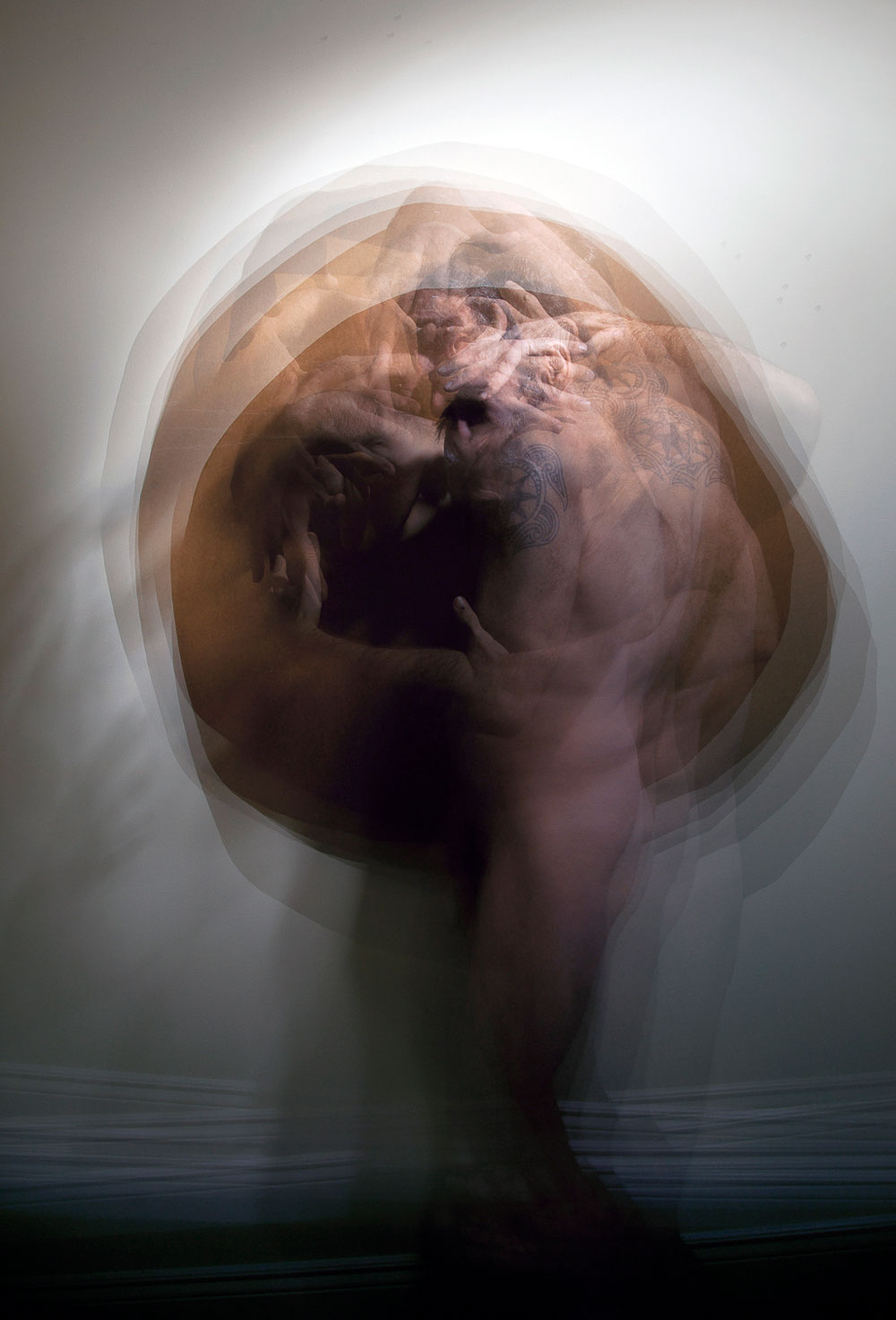

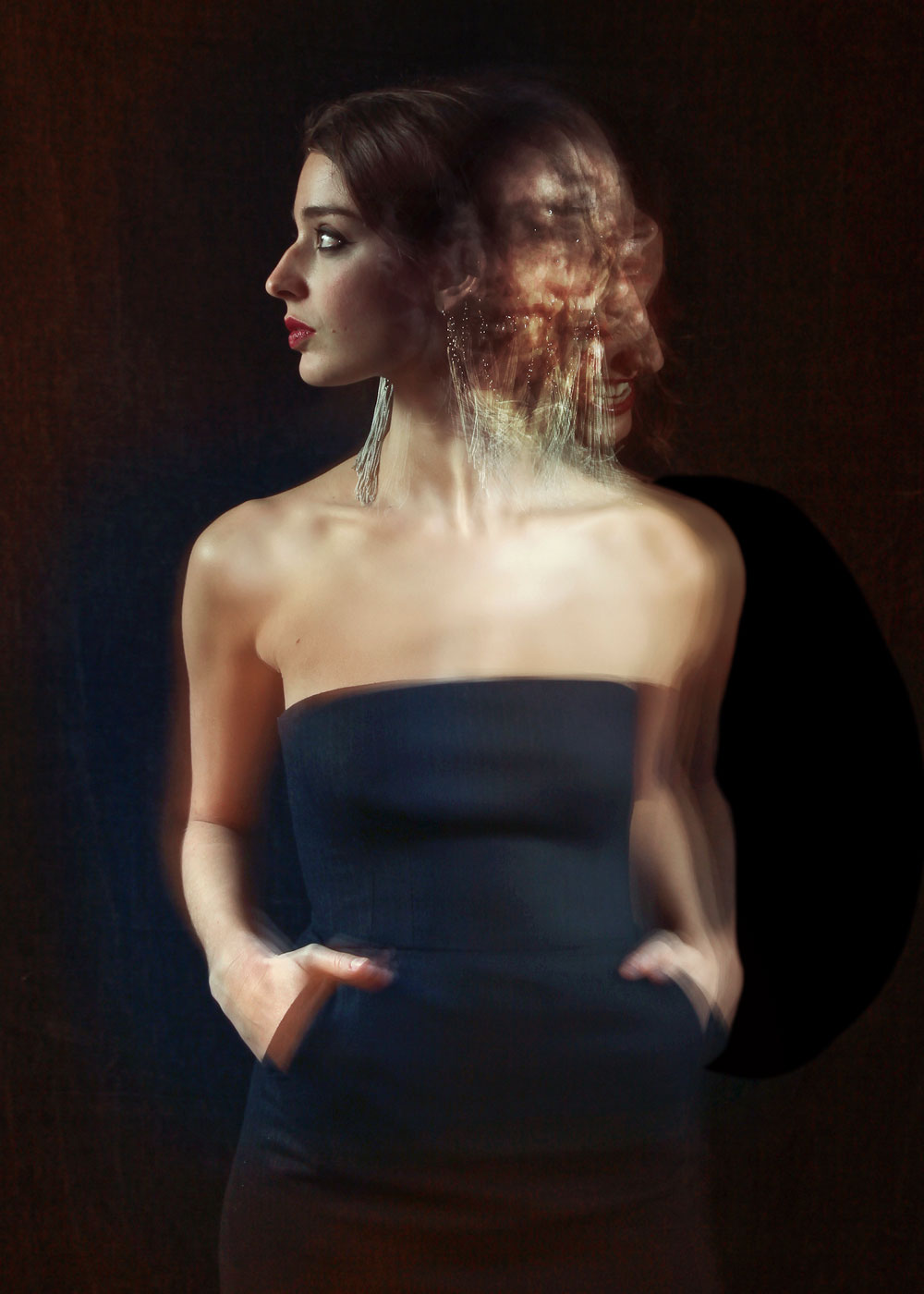

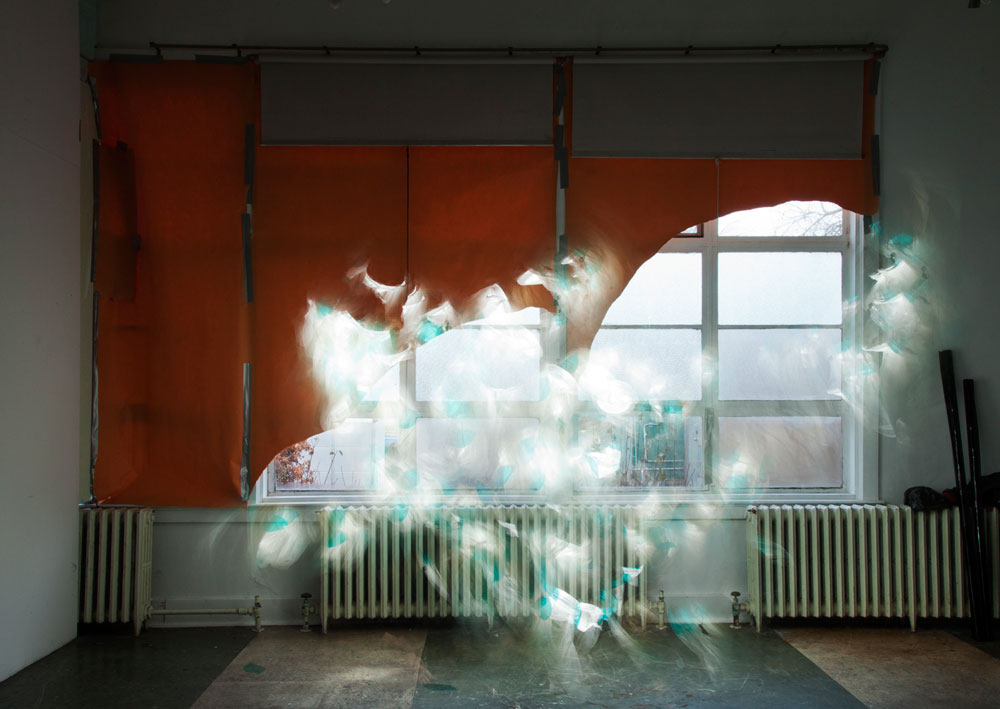

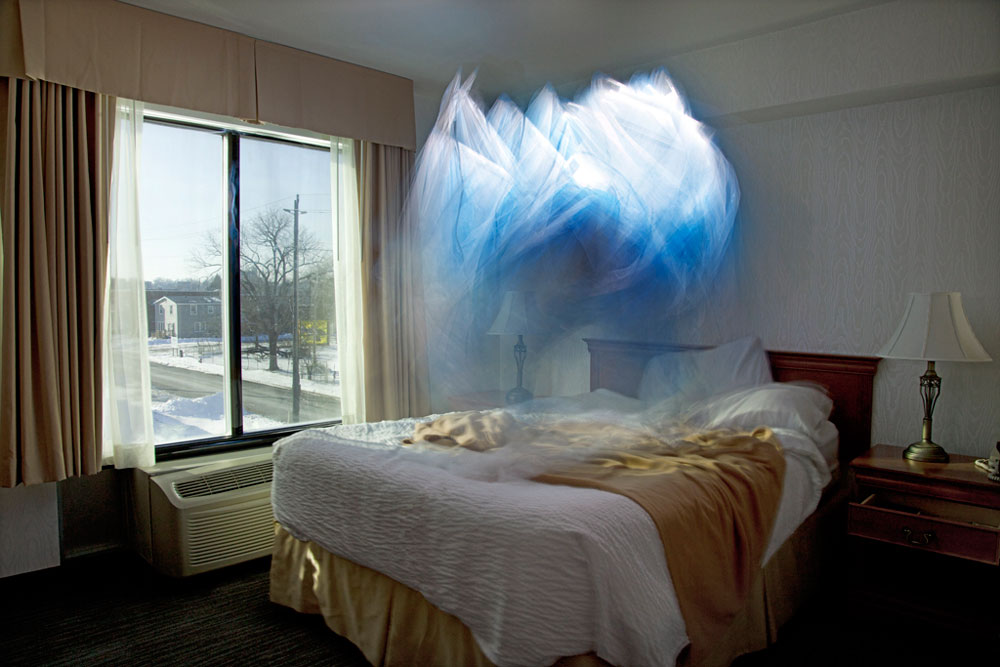



JR: What is light painting?
SC: It’s a photographic technique of moving a light source in front of the camera during a long exposure, kind of like drawing with a light brush. The brush can also illuminate the subject or some elements in the space facing the camera and the camera itself can be moved when facing a light source or a lighted object.
The first one was Pathological Walk From In Front (1889), by Georges Demeny and Etienne-Jules Marey, who still remains of great influence for me. The most famous one would be Gjon Mili’s Picasso draws a centaur (1949) and closer to us the work of Canadian photographer Diana Thorneycroft “Touching The Self” in the 1990’s. A quick search online will get you tons of resources.
It’s a very simple and effective way to approach and understand photography, the most direct illustration of its etymology, and most essential figuration of time within space: movement.
It offers endless creative possibilities, I first used this technique in art school by directly drawing on photo paper with a light pencil. I now use a whole range of intermittent and continuous light sources plus light moving objects (paper cut-outs from studio backdrops lately) and models to create my images.
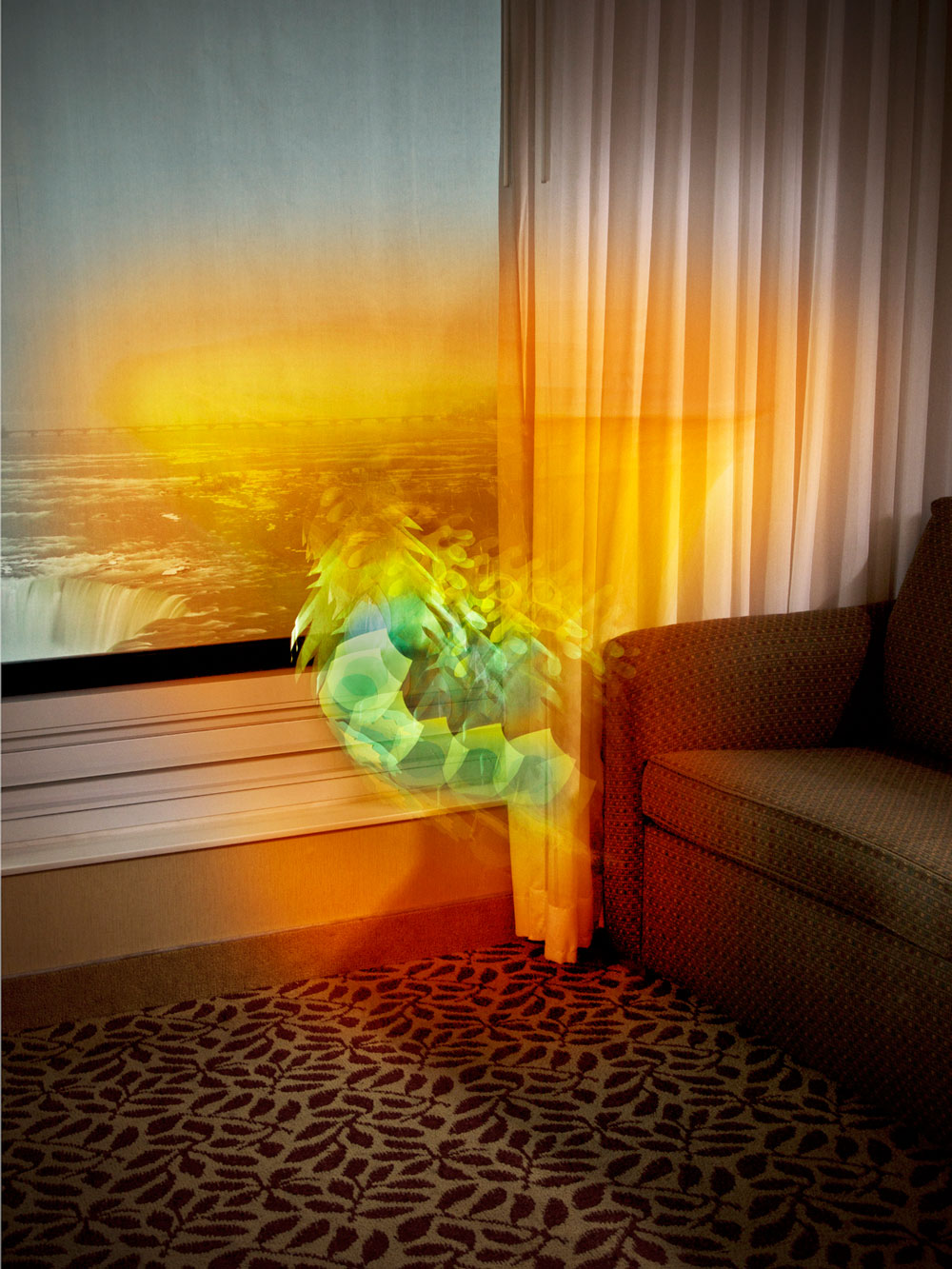

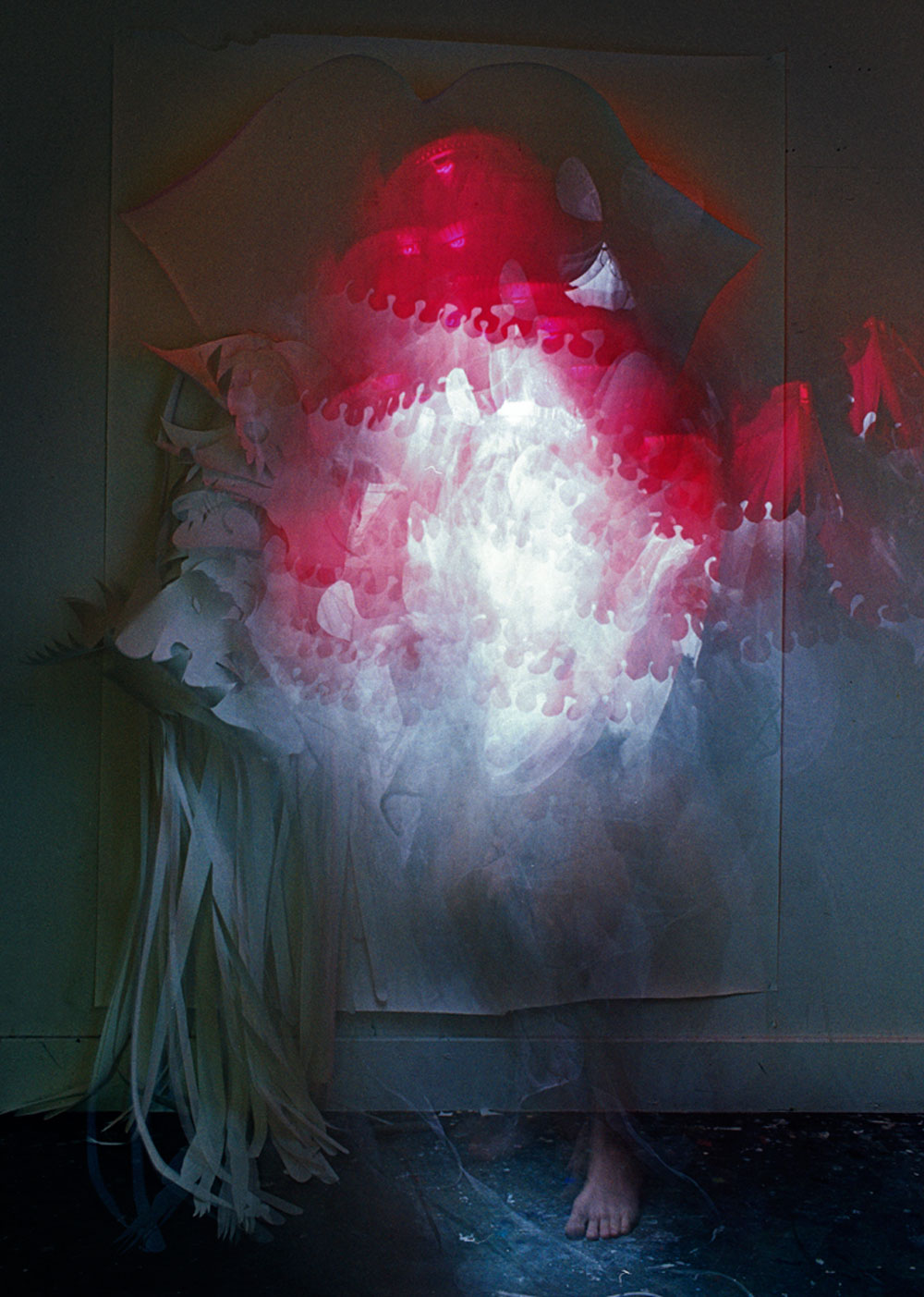

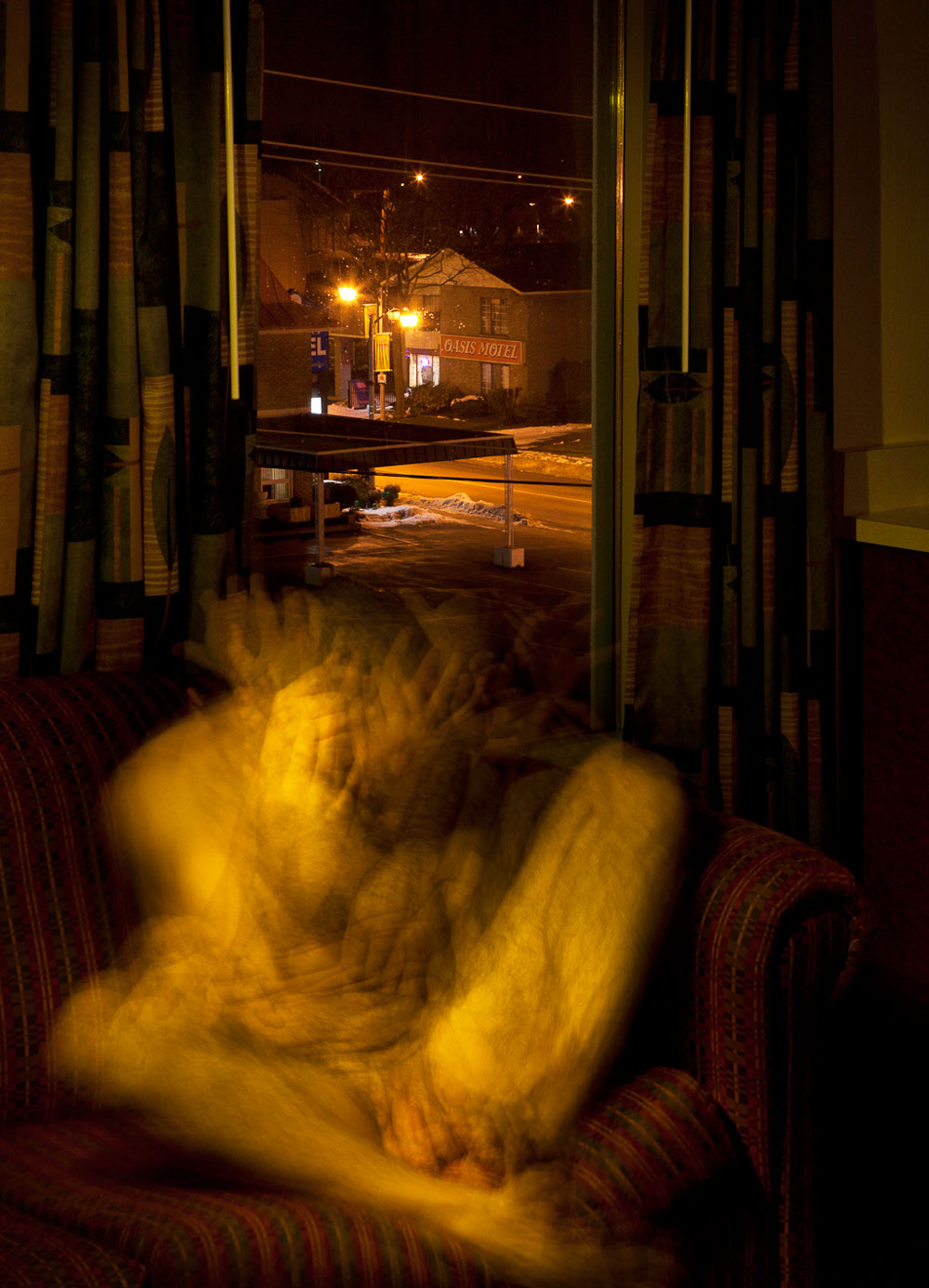

JR: Tell us about the series of work which has you bunkered away in a hotel room. What is this activity for you? Are you thinking of a finished product when you set out to work in this way, or are you merely committed to the actions and time alone?
SC: In Niagara Falls during the dead season, it’s common to find suites large enough to work in for $50 a night, which enables me to carve creation time out of the daily routine, in a live-work setting with no distraction.
It is so many things: a place where I get to collect myself and reflect on the meaning of making art here as an immigrant coming from France, a place where I get to practice and refine my craft and a temporary studio space.
Although those rooms are neutral territory, their basic set of aesthetic marks (furniture, wallpaper, bed covers, windows) and their style already suggests a narrative shaped by our own experiences and by movies (there’s always the feeling of entering a movie set when entering a hotel room for the first time). The luminous shapes that unfold respond to these narratives.
In the early pictures of this yet-to-be-titled series I used my body as a model, a brush or a stencil and focus on creating shapes by withdrawing my visual presence as much as possible through fast movements as a metaphor for a settlement that could only occur through action. The only element of the finished product I’m certain of is the location: a hotel room.
I can steer to one direction or another, but I can never tell where the work is going to take me. This is what I love about it.
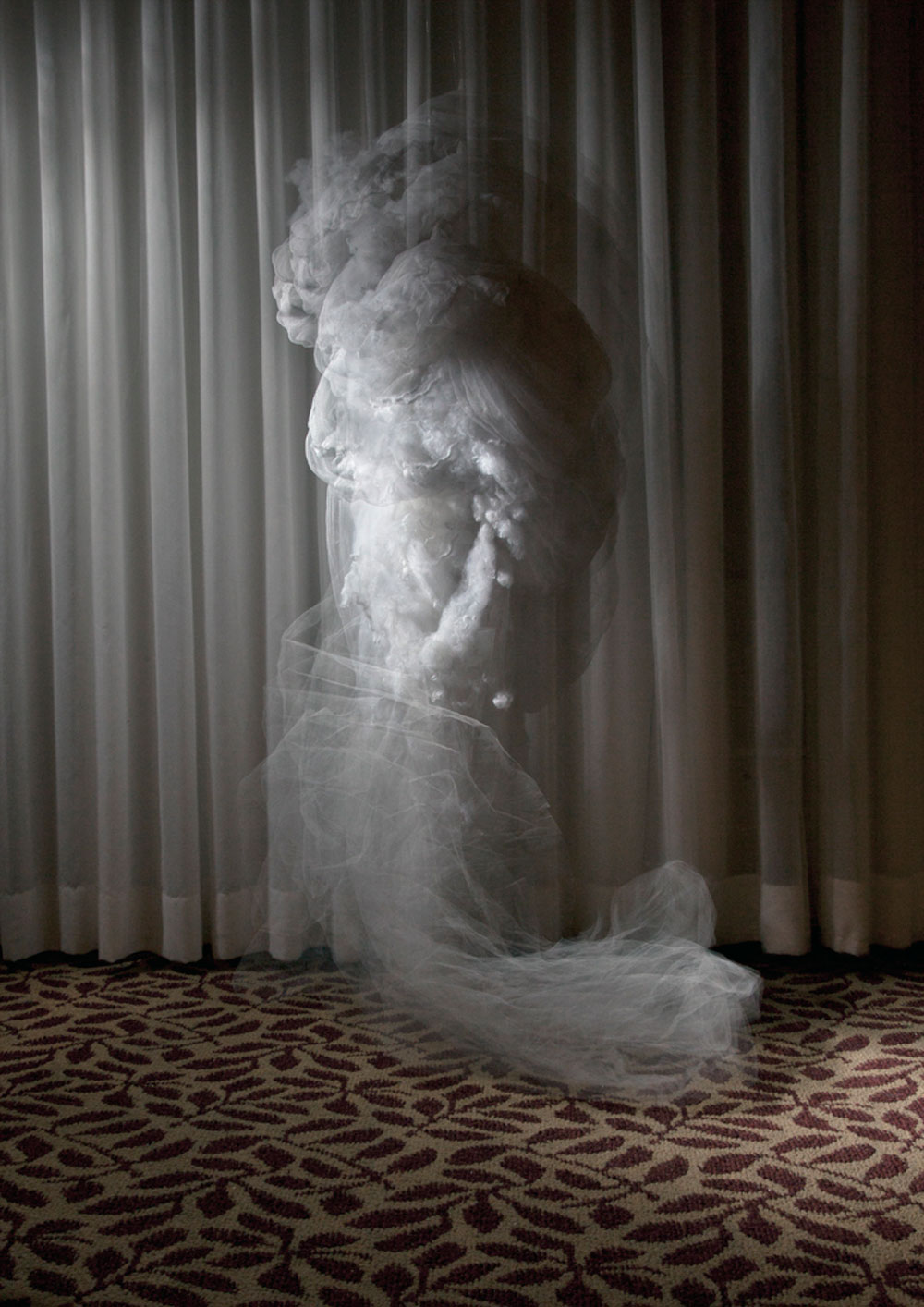

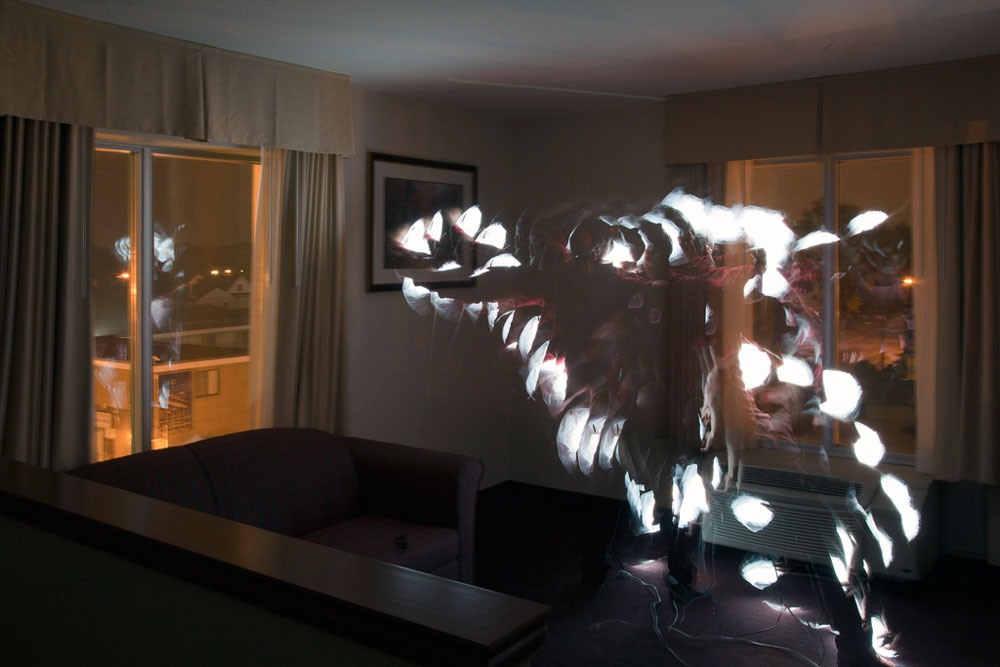

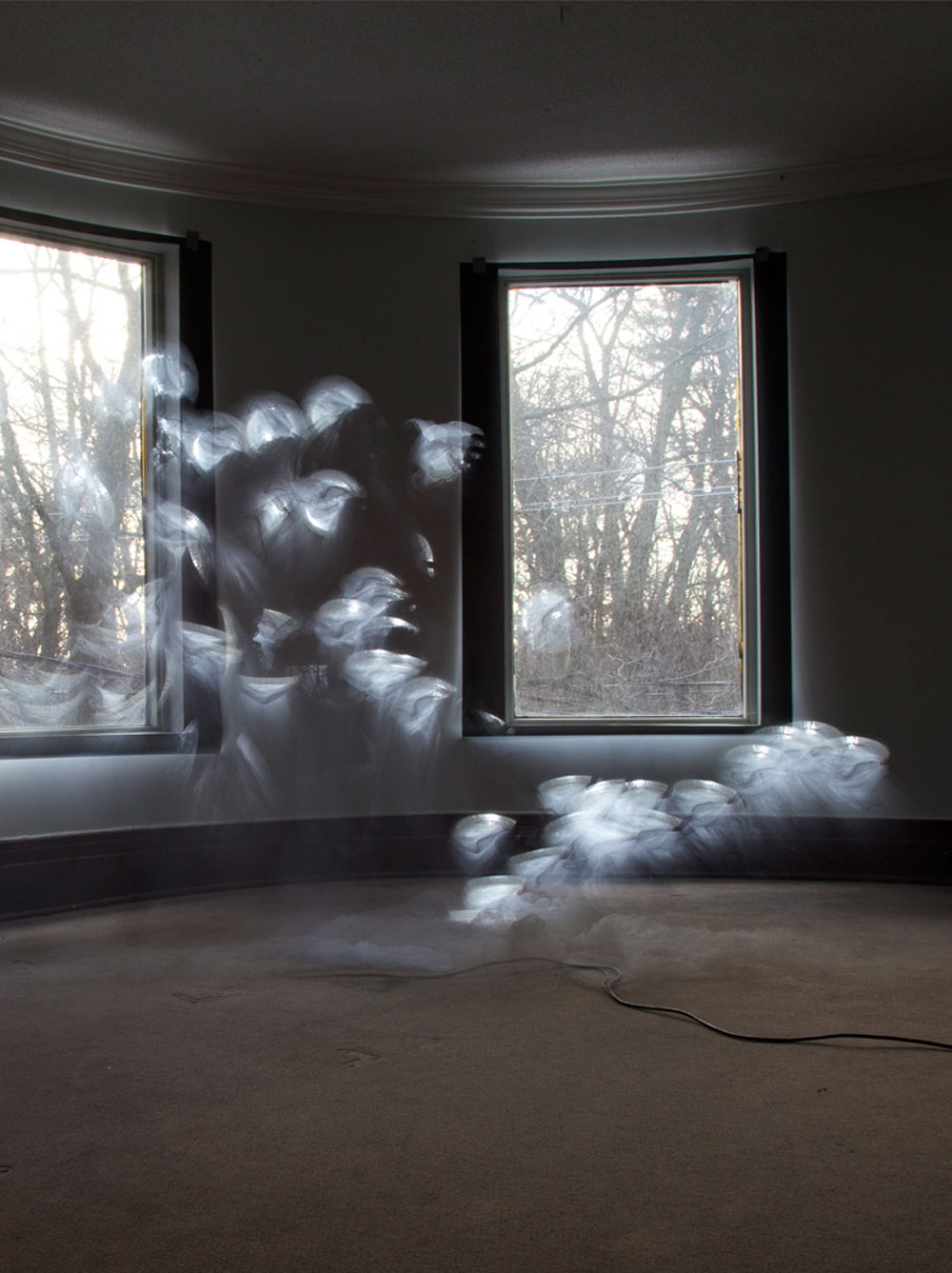

JR: There is just no way to avoid the word “haunting” when it comes to your work. The lighting, settings, objects and the ghostly emanations produced through your “light painting.” Do you look at your work this way? Where are these haunting motifs or qualities emerging from?
SC: I like to think that I came across these qualities by chance, that they are the mere result of working with these type of lights and translucent props in semi obscurity (a mosquito net, a Halloween spider web, a plastic poncho) but I think those choices are influenced by one of the most important aesthetic chock I’ve had as a young artist. When in a bookstore in Paris I came across a book on spirit photography presenting Albert Von Schrenck-Notzing’s research photographs (1910’s-20’s) along with many others (R.W. Conant, Dr Gerke, Dr Thomas Glen Hamilton) the book showed ectoplasms coming out of mediums.
I became fascinated by these images, they opened a breach in my young mind I knew I was looking at something staged and yet a part of me wanted to believe; I was fascinated because those photographs were created before the invention of advanced post-production techniques available now and they challenged two things simultaneously: the so-called objectivity of photography and the impossibility of what was photographed. There was something suspicious about them: fraudulent in their statements and yet showing real things. I truly was enchanted.
It is this type of enchantment I attempt to replicate through a simple, process-based way to create photographs by performing a series of actions live recorded by my camera. I only use Photoshop to crop and to balance the colors and luminosity before printing.
I want to show something out of place. A dissonance. Ultimately, the haunting vibe is not something I’m specifically looking to create when I shoot, but the right dosage of it is what makes the picture good.
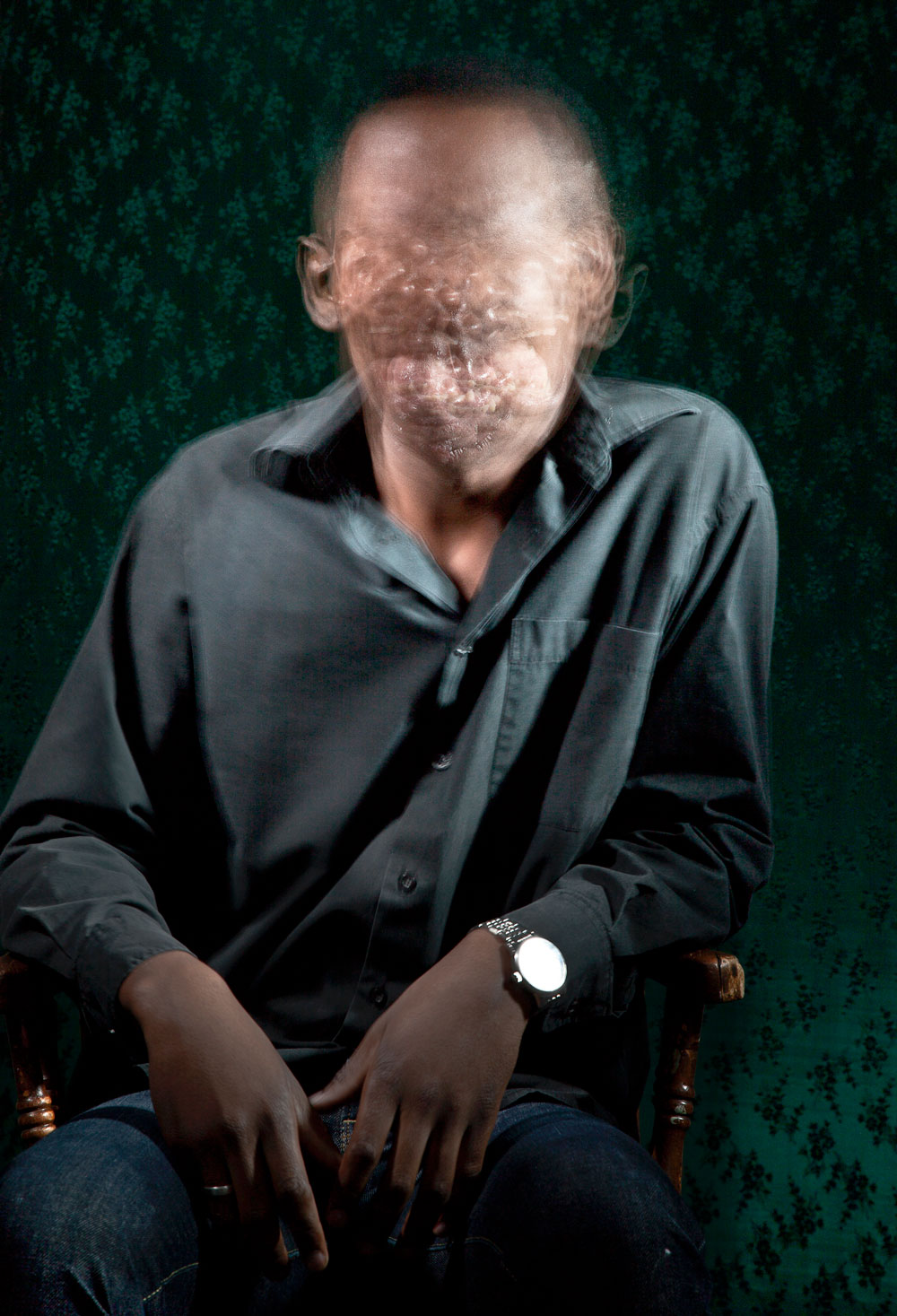

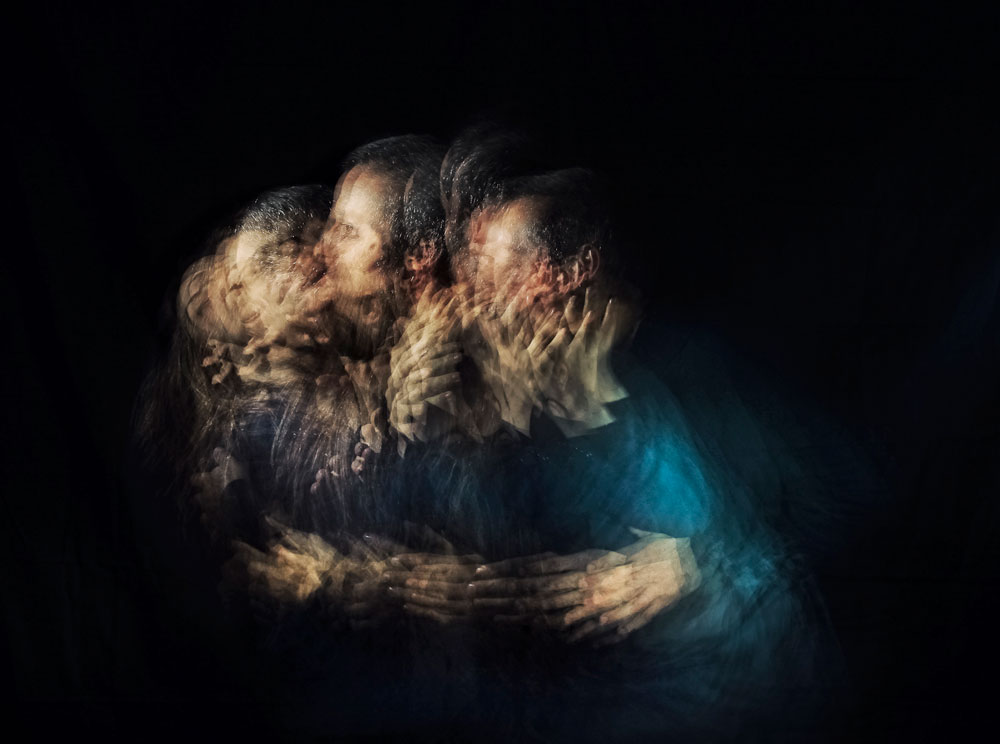

Learning to create these experiences gave me a vision of what success as an artist really is about: to transfer a certain ability to look at things and nurture a disposition to be amazed.
JR: You briefly outlined your teaching courses to me over dinner at your house. I was fascinated by how practical and accessible your approach sounded. It also sounded profoundly thoughtful and full of understanding around how people learn and play. Please tell The Luminous Landscape community about how you teach?
SC: In 2014, Le Labo (http://www.lelabo.ca), a francophone media art centre in Toronto sponsored me to learn creative teaching techniques with the Learning Through The Arts Program at the Royal Conservatory of Music. The two instructors of the workshop, Pandora Topp and Paula Wing radically changed my then- limited concept of art teaching and my metrics of success in art. During these sessions, a playful approach, an attention to the different kinds of intelligence people have, and the mastery of timing were used as a means to pass on theoretical and technical content. This allowed me to consider it as an art form in itself: something intrinsically inter-disciplinary, offering endless possibilities.
Here’s how the first “Drawing with Light” session starts: before entering the classroom each student is given chalk and half of a torn photograph. They then enter the classroom where the windows are covered with black sheets making it very dark and there is music playing. There is a projector on at one end of the room lighting the opposite wall with an upside-down slide of an outdoors scene. As they walk inside the room their shadow is projected onto the outdoor image. As they wander in the room and get familiar with the environment, I suggest they imagine themselves in the belly of a camera, the outside world is projected upside down on the wall and the wall is the sensor of the camera. As they are invited to find their partner (who holds the other half of the torn photograph), I insist on them noticing and playing with their shadow moving on the wall, interfering with the projected picture as I explain the rules of the game. Each student will be both photographer and model. The photographer will stage his model in order to compose an image by drawing its shadow on the wall with chalk in response/reaction to the background during a short period of time, the length of the exposure, determined by a period of silence (teacher or volunteer student pauses the music), and then we reverse the roles.
At the end of this playful introduction, the light turned on reveals a complex layering of dozens of intertwined chalk silhouettes, a work of art, a group shot. The students sit on the floor, comment on their work, and their comments are transcribed and used for the next exercise. At the end of the workshop three hours later, the students will have learned through collective activities how a camera works, how to use it in long exposure, how to do light drawing/paintings and will have created the content of what will become a mural with their printed work showing their images and their light-written thoughts about the whole process.
This kind of approach works for everybody from 7 to 77 years old and beyond. Learning to create these experiences gave me a vision of what success as an artist really is about: to transfer a certain ability to look at things and nurture a disposition to be amazed. There is now a “teaching department” in my creative process, where I gather thoughts and ideas and look at the type of wonders they potentially convey and see how it’s sharable in a teaching setting. My teaching portfolio is still thin, but I’m working at it.
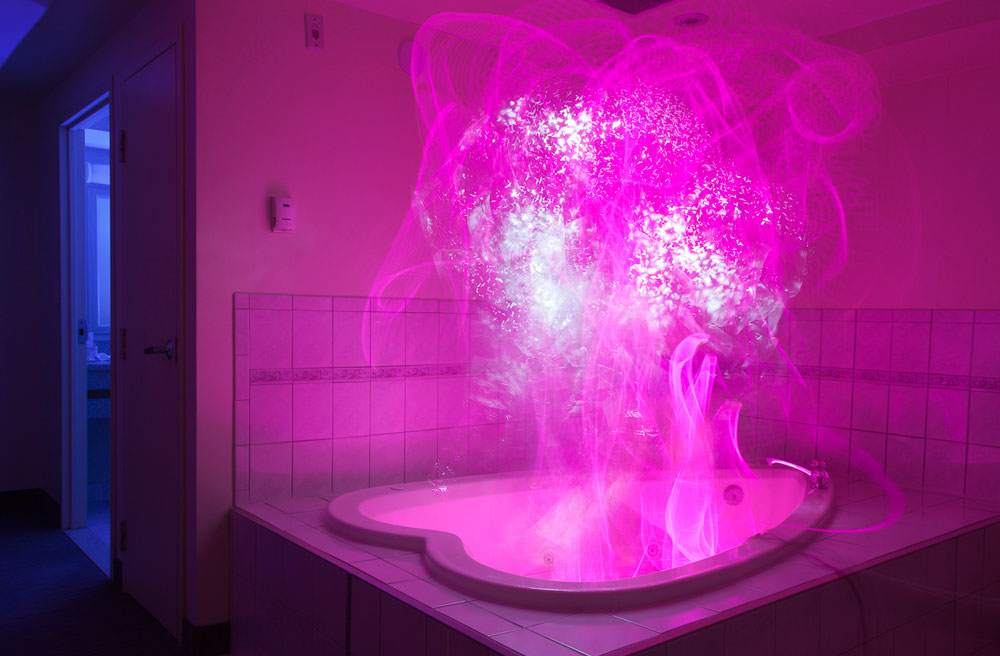

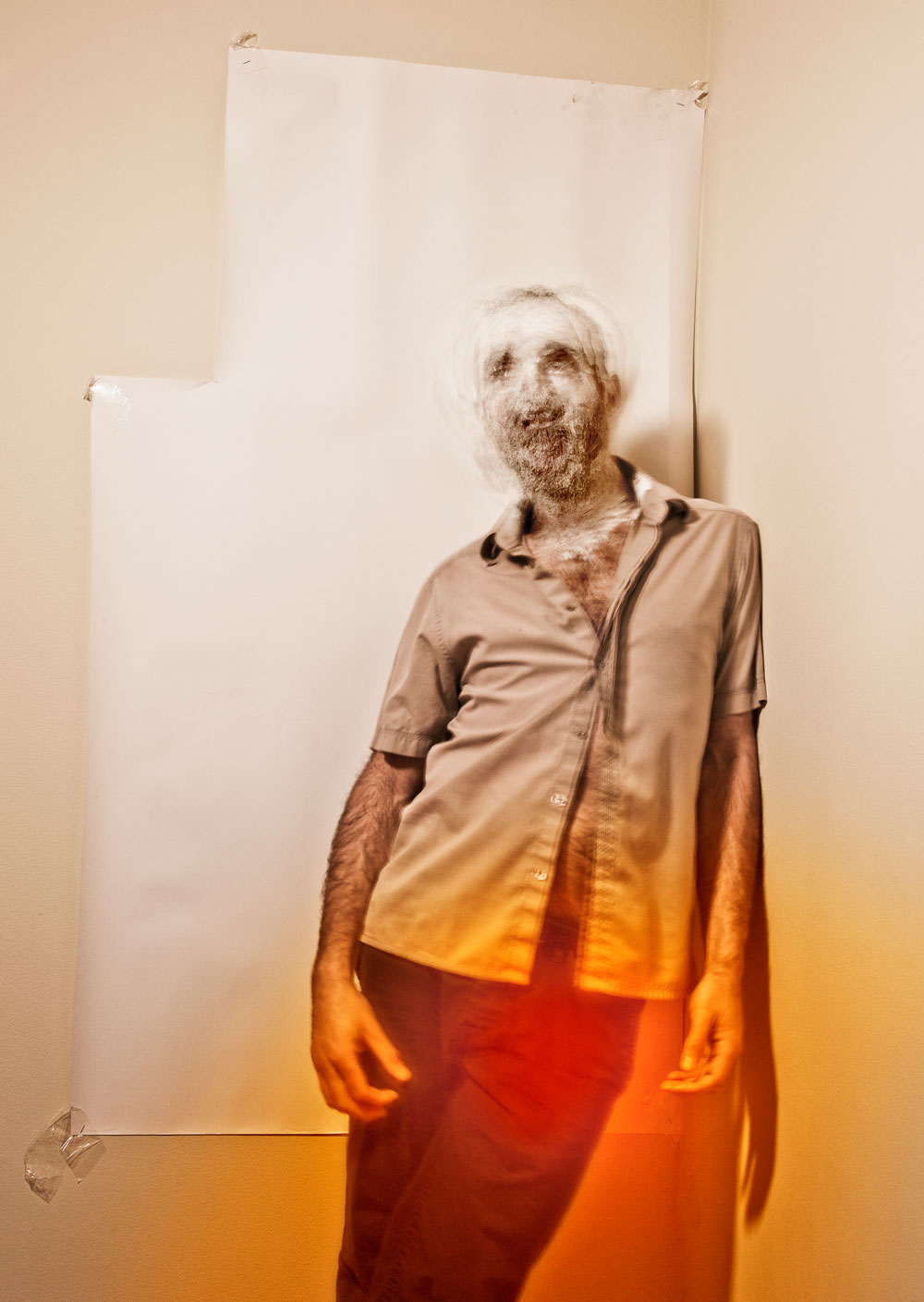

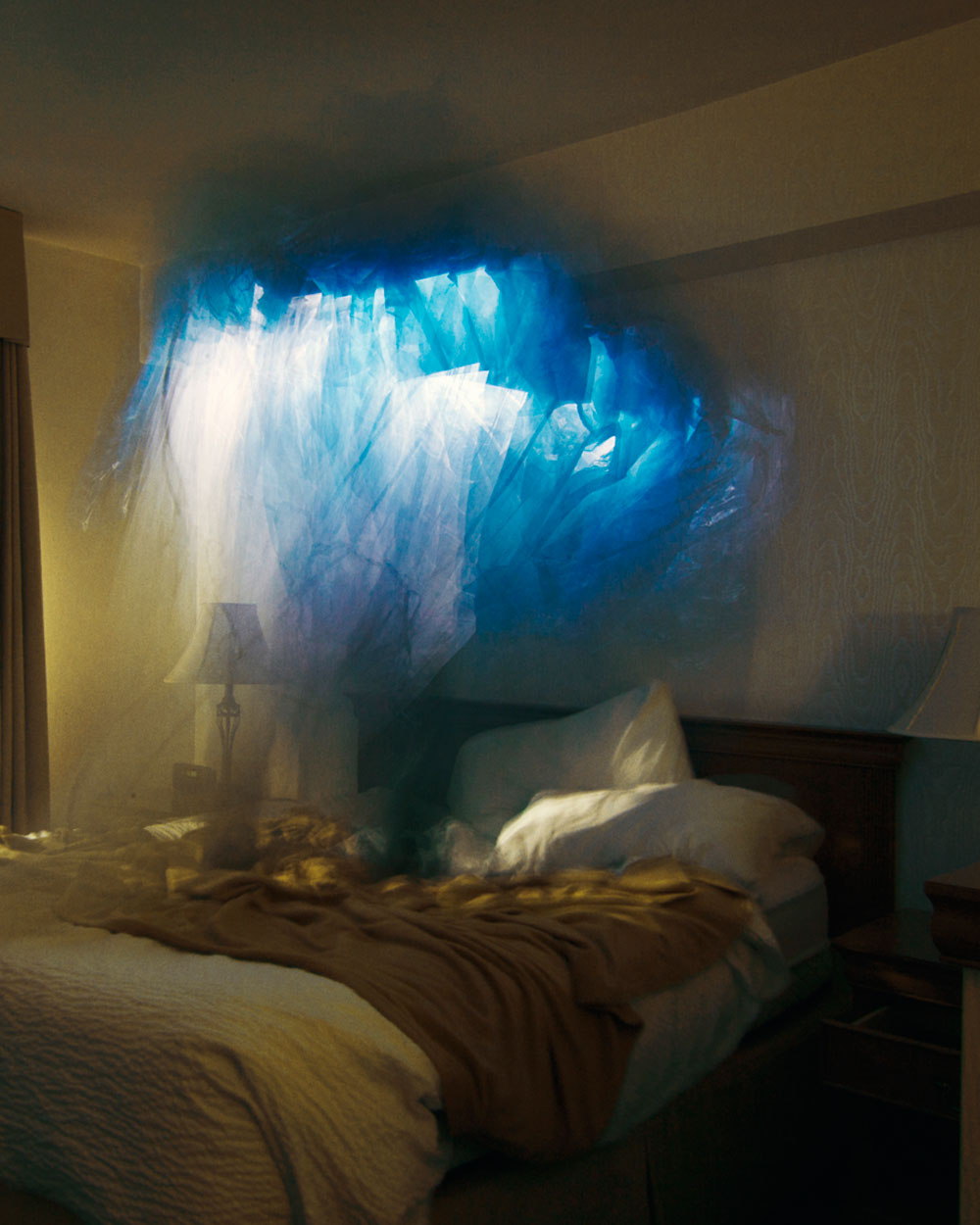



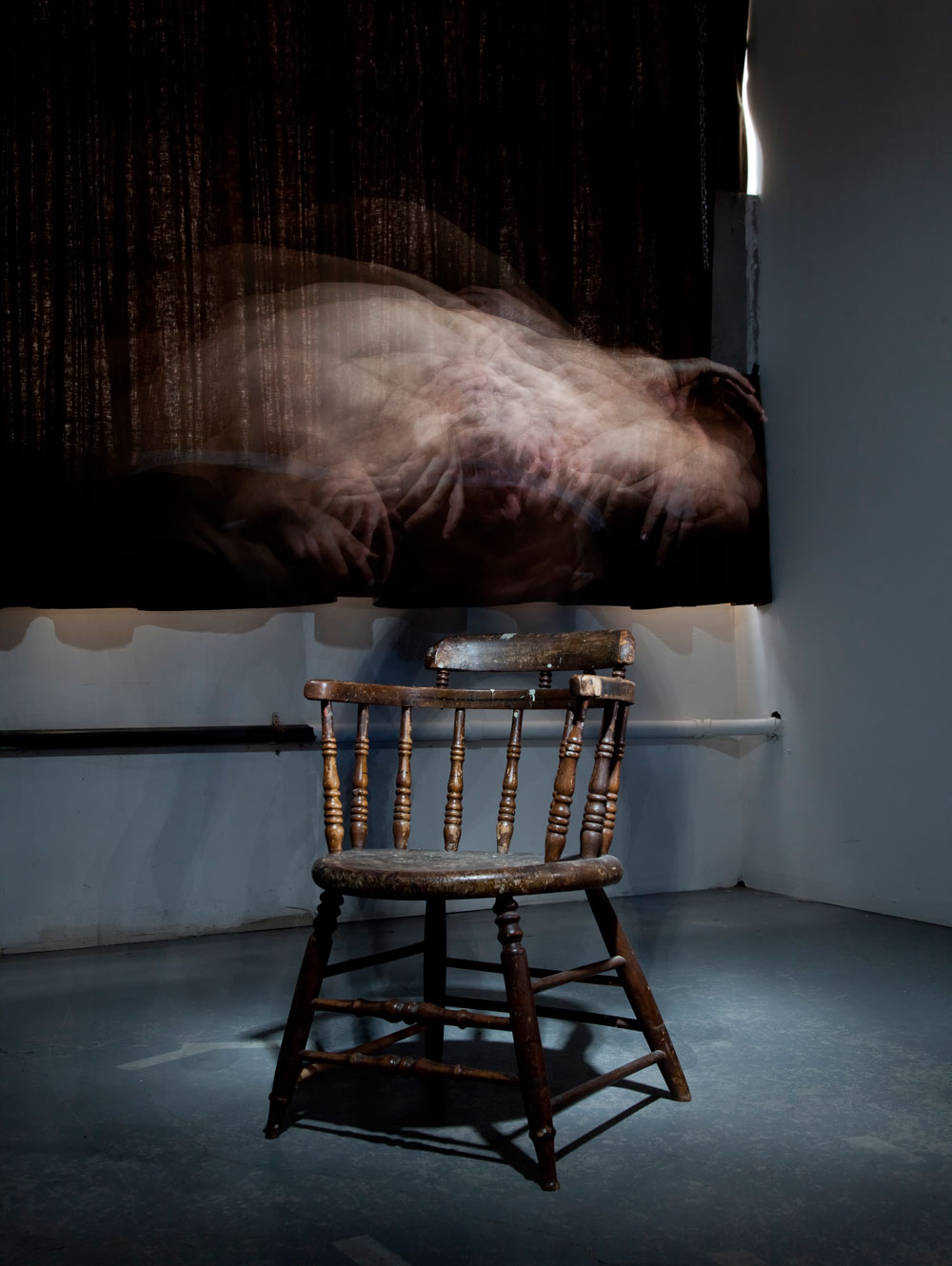

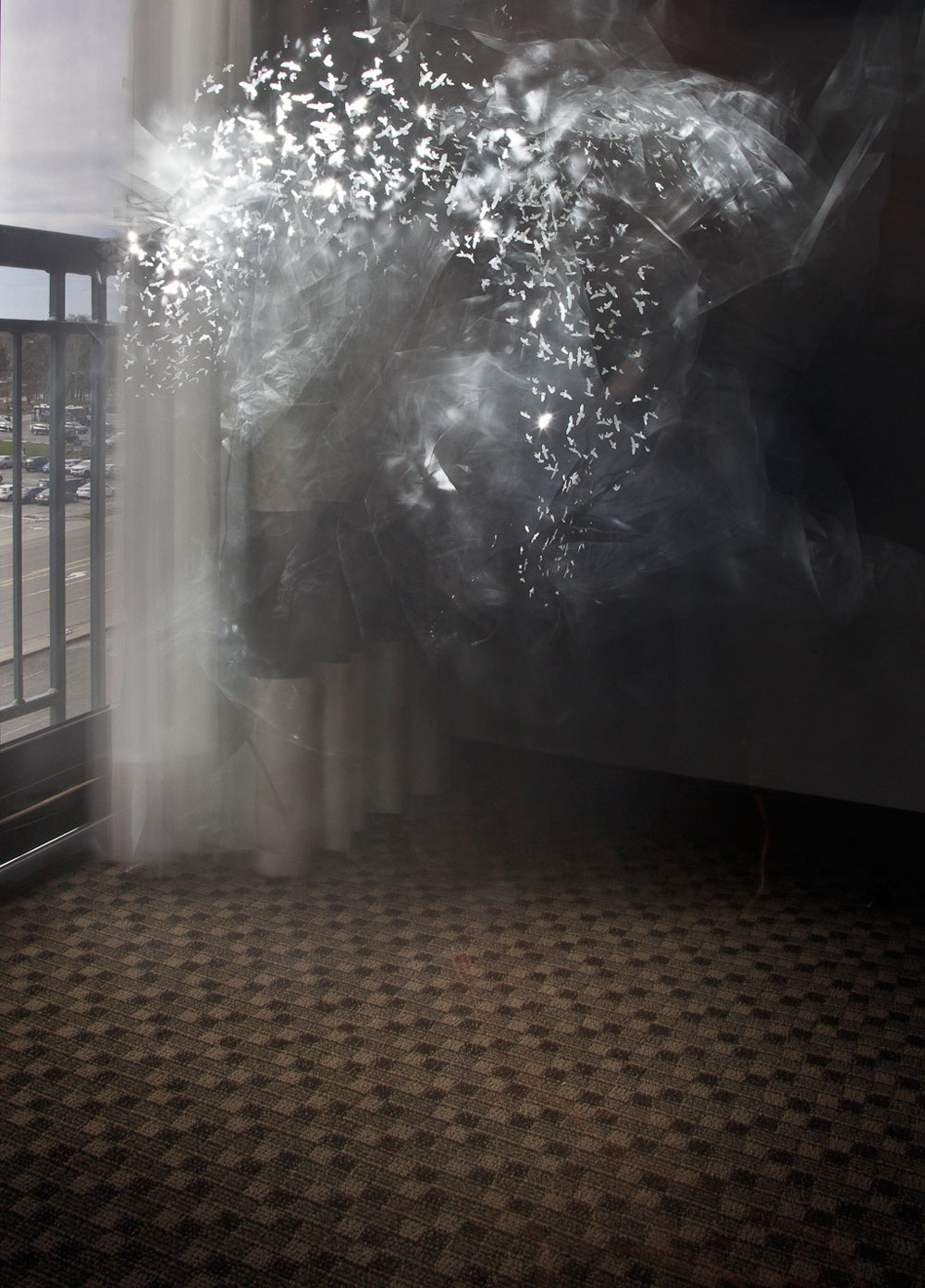

Josh Reichmann
April 2019







